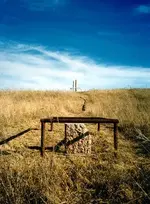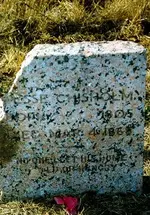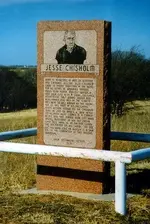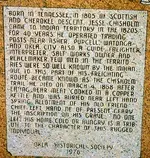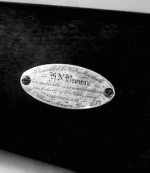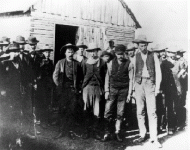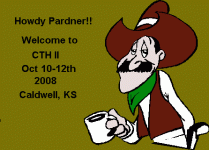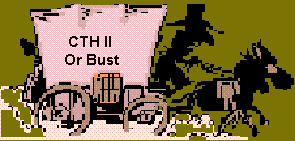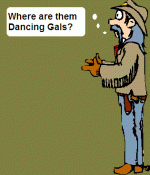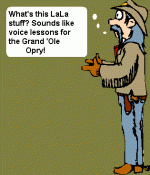Re: "CHISHOLM TRAIL HUNT 2008" Brand the calendar October10-12th for CTH2
JESSE CHISHOLM (1806-1868)
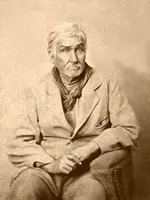
Jesse Chisholm, Indian trader, guide, and interpreter, was born in the Hiawassee region of Tennessee, probably in 1805 or 1806. His father, Ignatius Chisholm, was of Scottish ancestry and had worked as a merchant and slave trader in the Knoxville area in the 1790s.
Around 1800 he married a Cherokee woman in the Hiawassee area, with whom he had three sons; Jesse was the eldest. Sometime thereafter Ignatius Chisholm separated from Jesse's mother and moved to Arkansas Territory. His mother evidently took Jesse Chisholm to Arkansas with Tahlonteskee's group in 1810.
During the late 1820s he moved to the Cherokee Nation and settled near Fort Gibson in what is now eastern Oklahoma. Chisholm became a trader and in 1836 married Eliza Edwards, daughter of James Edwards, who ran a trading post in what is now Hughes County, Oklahoma. Chisholm took trade goods west and south into the Plains Indian country, learned a dozen or so languages, established small trading posts, and was soon in demand as a guide and interpreter. Eventually he interpreted treaties in Texas, Indian Territory, and Kansas.
Jesse Chisholm was known early as an honest trader, and by this honesty, became a peacemaker. He was not only an interpreter for the U. S. Army officials but he had great influence among the red warriors. Everywhere he was a peacemaker and a pathfinder. At one time he was adopted into almost a dozen Indian tribes of Oklahoma. He was always a Good Samaritan. The wild Comanche’s knew they could capture children in Texas and then sell them to Jesse Chisholm in Oklahoma. [If he couldn't find their people, he adopted the children himself.]
He had stores at different places; one two miles east of Asher, one at Council Grove, a few miles west of the present Oklahoma City; one near the mouth of the Little River, and another near the present town of Purcell. One of his greatest activities was his pack train, which was a traveling store on wheels. In reality it was a department store on mule-back. He early learned that the Indians did not like to come east into the timber section and hence he went to them. He would equip his trains and go to the center of the Indian tribe. He packed his trains with things the Indians liked and admired, red calico, beads, paints, but he never took them whiskey. No written chronicle has been compiled on this great character from 1830, and his meager history is written in good deeds.
He was active in Texas for nearly twenty years. While president of the Republic of Texas, Sam Houston, who probably met Chisholm at Fort Gibson between 1829 and 1833, called on him to contact the prairie Indian tribes of West Texas. Chisholm played a major role as guide and interpreter for several Indian groups at the Theuacana Creek councils beginning in Spring 1843, when he coaxed several tribes to the first council on Theuacana Creek near the Torrey Brothers trading post eight miles south of the site of present Waco. Over the next year and a half he continued to offer his services to Houston, and on October 7, 1844, Chisholm got the Comanche’s and others to attend a meeting at Theuacana, where Houston spoke. In February 1846, while visiting the Torreys' post from a trip south of San Antonio, Chisholm was hired to bring the Comanche’s to a council at Comanche Peak (Glen Rose today). The meeting was held on May 12. Finally, on December 10, 1850, Chisholm assembled representatives from seven tribes at a council on the San Saba River. At some of these meetings and on trading trips he was able to rescue captives held by the Indians.
By 1858 Chisholm ended his trips into Texas and confined his activities to western Oklahoma. During the Civil War he served the Confederacy as a trader with the Indians, but by 1864 he was an interpreter for Union officers. During the war Chisholm resided at the site of Wichita, Kansas. Chisholm Creek in the present city is named for him. In 1865, Chisholm and James R. Mead loaded a train of wagons at Fort Leavenworth and established a trading post at Council Grove on the North Canadian near the site of present Oklahoma City. Many of his Wichita friends followed, and their route later became the Chisholm Trail, which connected Texas ranches with markets on the railroad in Kansas. Chisholm attempted to arrange an Indian council at the Little Arkansas in 1865, but some tribes held out. In 1867, with the aid of Black Beaver, famous Delaware leader and guide, he induced the plains tribes to meet government representatives in a council that resulted in the Medicine Lodge Treaty.
Some historians note with misplaced irony that Jesse Chisholm never drove cattle on the trail that bears his name. Imagine! To have a cattle trail named after you -- the most famous cattle trail on the planet -- and never to have driven cattle on it!
Yet Gard tells us that Chisholm, in April 1866, "returned to Kansas (from his trading post on the North Canadian River), bringing buffalo robes, furs and 250 head of cattle."
And Harry Sinclair Drago, in his book Wild, Woolly & Wicked argues further: "In his bartering with the Indians he was principally interested in securing furs and buffalo robes. That he had to accept some cattle for his goods could be taken for granted. ... When he had gathered a herd of several hundred head, he drove them to Fort Gibson.
Chisholm died of food poisoning after eating Buffalo meat that had been cooked in a copper kettle at Left Hand Spring, near the site of present Geary, Oklahoma, on April 4, 1868.
The epitaph on his headstone sums up just who Jesse Chisholm was.
“No one ever left his home cold or hungry”.














